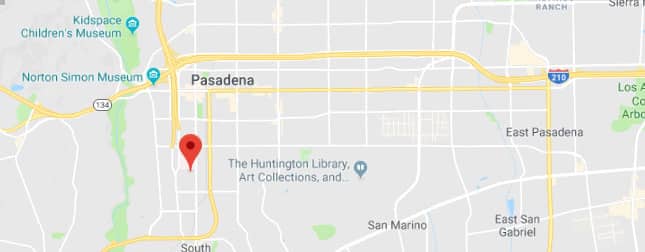When considering cosmetic enhancements to the nose, many individuals find themselves torn between nasal tip refinement and rhinoplasty. While both procedures aim to improve the appearance of the nose, they differ significantly in their scope, techniques, and results. Understanding these differences can help you make an informed decision about which option may be best suited for your aesthetic goals. Dr. Eric Yavrouian provides tip refinement and rhinoplasty to patients in Glendale, Pasadena, Burbank, Greater Los Angeles, Beverly Hills, CA, and surrounding communities.
Understanding Nasal Tip Refinement
Nasal tip refinement is a surgical procedure dedicated to enhancing the shape and contour of the nasal tip, catering to individuals satisfied with the general structure of their nose but seeking improvements in this specific area. Common concerns addressed by tip refinement include a bulbous tip, a drooping tip, or an overly pointed tip.
Unlike a full rhinoplasty, nasal tip refinement focuses solely on the tip, making it a less invasive option with a potentially quicker recovery time. This procedure can utilize either open or closed rhinoplasty techniques, although the primary focus remains on the nasal tip. The choice between these techniques depends on the surgeon’s preference and the specific adjustments needed.
In tip refinement, the surgeon might use sutures to reshape the cartilage, providing precise control over the tip’s projection and contour. Another method involves modifying the cartilage structure by removing excess tissue or adding grafts to enhance the tip’s appearance. These techniques are designed to create a more harmonious and aesthetically pleasing nasal tip while minimizing scarring.
Given its targeted nature, nasal tip refinement is often performed on an outpatient basis, adding to its convenience. Patients typically experience a shorter recovery period compared to those undergoing full rhinoplasty, allowing them to resume their daily activities sooner. With its ability to deliver significant improvements without extensive surgical intervention, nasal tip refinement is an attractive option for individuals looking to enhance the specific aesthetics of their nasal tip.
What Is Rhinoplasty and What Does It Entail?
Rhinoplasty, commonly referred to as a “nose job,” is an all-encompassing surgical procedure designed to alter the nose’s shape and function. It addresses various aesthetic and functional concerns, including nose size, bridge height, nostril width, and overall nasal symmetry. Additionally, rhinoplasty can correct deformities caused by trauma or congenital conditions, offering solutions for both cosmetic and medical issues.
The procedure employs two main techniques: open rhinoplasty and closed rhinoplasty. Open rhinoplasty involves a small incision on the columella, the tissue separating the nostrils, granting the surgeon enhanced visibility and access to the nasal structures. This technique is often favored for more complex reshaping tasks. In contrast, closed rhinoplasty involves internal incisions within the nostrils, eliminating visible scarring. The choice between these techniques depends on the extent of the changes required and the surgeon’s expertise.
During the operation, the surgeon may remove or reshape nasal cartilage and bone to achieve the desired outcome. Cartilage grafts might be used to provide additional support or enhance specific areas, especially if previous trauma or surgeries have compromised the nasal structure. In some cases, tissue from other body parts, such as the ear or rib, may be utilized for grafting purposes.
Anesthesia options for rhinoplasty include local anesthesia with sedation or general anesthesia, based on the procedure’s complexity and the patient’s comfort. The surgery typically lasts between two to four hours, depending on the degree of modification required.
It’s crucial for patients to have a detailed discussion with their surgeon to set realistic expectations, understand the potential risks, and follow pre- and post-operative care guidelines for optimal results.
When To Consider Nasal Tip Refinement Over Full Rhinoplasty
If your concerns are primarily focused on the nasal tip—such as issues with a bulbous, drooping, or overly pointed tip—nasal tip refinement might be the ideal choice for you. This procedure targets specific areas of the nasal tip without altering the rest of the nose, making it a less invasive option compared to a full rhinoplasty. It’s particularly suitable for individuals who are content with the overall shape and size of their nose but wish to enhance the tip’s aesthetics.
On the other hand, if you have broader concerns that extend beyond the nasal tip, such as issues with the bridge, nostrils, or overall nasal symmetry, a full rhinoplasty may be more appropriate. Rhinoplasty addresses comprehensive aesthetic and functional issues, offering solutions for those dissatisfied with multiple aspects of their nose or experiencing breathing difficulties due to structural problems.
Patients who have experienced nasal trauma or have congenital deformities may also find that rhinoplasty offers a more comprehensive approach to meet their needs. While nasal tip refinement focuses on localized changes, rhinoplasty provides the opportunity to achieve more extensive and holistic improvements to the nasal structure.
Ultimately, the decision between nasal tip refinement and full rhinoplasty should be guided by your specific goals and concerns, as well as the recommendations of a qualified plastic surgeon. Consulting with an experienced surgeon can help you determine which procedure aligns best with your desired outcomes and aesthetic preferences.
Surgical Techniques for Nasal Tip Refinement
The techniques employed in nasal tip refinement are diverse and tailored to meet individual patient needs. A commonly used method involves sutures to reshape the nasal cartilage. By strategically placing sutures, surgeons can adjust the projection, rotation, and definition of the nasal tip with precision. This technique is advantageous for its minimal scarring and ability to produce noticeable enhancements.
Another approach involves modifying the existing cartilage structure. Surgeons might trim away excess cartilage to reduce a bulbous tip or refine the nasal contour. Alternatively, cartilage grafting can be used to augment areas requiring additional support or definition. Grafts are typically harvested from the patient’s own body, such as the ear or rib, ensuring compatibility and reducing the risk of rejection.
The choice of technique often depends on the desired outcome and the specific anatomical considerations of the patient. For instance, individuals seeking subtle refinements may benefit from suture techniques, while those requiring more dramatic changes might need cartilage modification or grafting.
Given the targeted nature of nasal tip refinement, the procedure is generally less invasive than a full rhinoplasty. The operation usually takes between one to two hours, with the specific duration depending on the complexity of the case. Patients typically experience a more straightforward recovery process, making it a convenient option for those looking to enhance their nasal tip without undergoing extensive surgery.
These refined techniques aim to create a harmonious and aesthetically pleasing nasal tip, aligning with the patient’s overall facial features and aesthetic goals.
Comparing Recovery Times and Downtime
When comparing recovery times and downtime for nasal tip refinement versus rhinoplasty, there are notable differences to consider. Nasal tip refinement generally offers a shorter recovery period due to its less invasive nature. Patients typically experience some swelling and bruising, but these symptoms often diminish within a week. Most individuals can resume their regular activities within one to two weeks, making it an appealing option for those with tight schedules or minimal time off.
On the other hand, rhinoplasty tends to require a longer and more intensive recovery phase. This procedure involves more extensive alterations to the nasal structure, which can result in increased swelling and bruising. Patients undergoing rhinoplasty may need to take two to four weeks off from strenuous activities to allow for proper healing. Additionally, the final results of rhinoplasty may take several months to fully materialize as the swelling gradually subsides and the nasal tissues adapt to their new shape.
Both procedures necessitate diligent adherence to post-operative care instructions provided by the surgeon. This may include using cold compresses to reduce swelling, keeping the head elevated, and avoiding activities that could impact the healing process. Proper care is crucial to achieving the best possible outcome and minimizing complications.
Choosing the Right Surgeon for Your Needs
When selecting a surgeon for nasal tip refinement or rhinoplasty, expertise and experience should be your top priorities. Start by ensuring the surgeon is board-certified in plastic surgery and specializes in nasal procedures. This certification indicates they have undergone rigorous training and adhere to high standards of practice.
It’s helpful to review the surgeon’s portfolio of before-and-after photos from previous patients who have undergone similar procedures. This will give you a visual sense of their skill level and aesthetic style. Reading patient testimonials and reviews can also provide valuable insights into the surgeon’s expertise and patient care.
Scheduling consultations with potential surgeons is a crucial step in the decision-making process. During these consultations, clearly articulate your aesthetic goals and concerns. A reputable surgeon will take the time to conduct a thorough evaluation of your nasal structure, discuss feasible outcomes, and recommend the most appropriate surgical approach tailored to your needs. They should provide a comprehensive explanation of the procedure, including the techniques they plan to use, potential risks, and expected recovery time.
Additionally, assess the surgeon’s communication style and bedside manner. You should feel comfortable and confident in their ability to understand and achieve your desired results. The right surgeon will prioritize patient education, ensuring you have all the necessary information to make an informed decision.
Remember, the success of your nasal surgery largely depends on the skill and expertise of the surgeon you choose. Take your time to research and consult with multiple surgeons if needed, to find the best fit for your specific needs and aesthetic goals.
For more information about treatments and procedures by Facial Plastic and Reconstructive Surgeon, Dr. Eric J. Yavrouian, serving patients in and around Glendale, Pasadena, Burbank and the Greater Los Angeles, CA area call 818-241-2150 or click here to contact him for a consultation.






